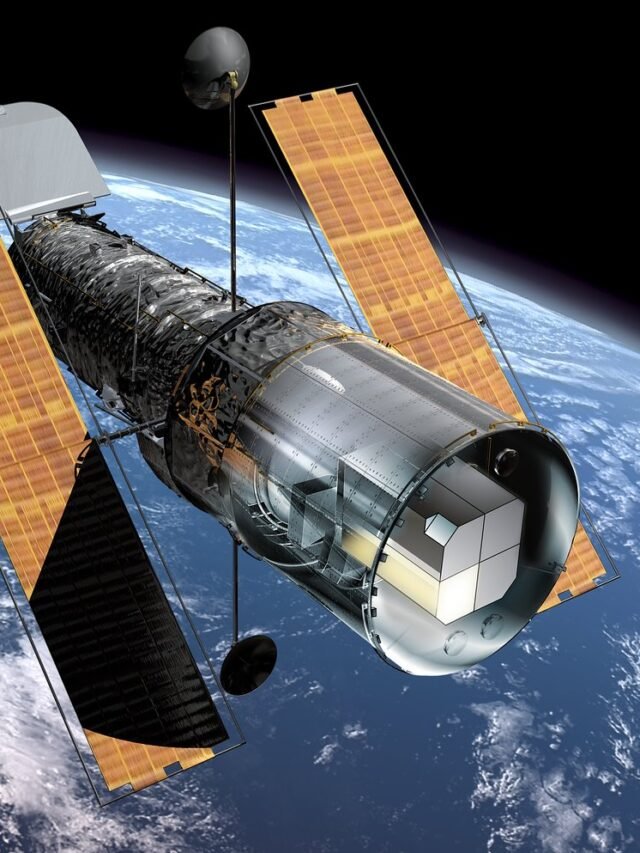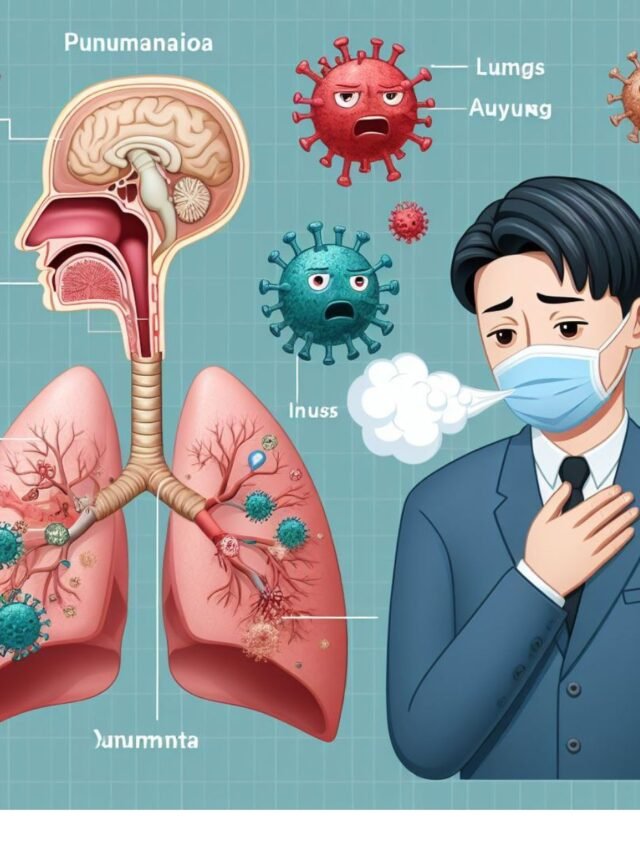What is Electricity: Understanding Generation, Transmission, Distribution, and Smart Grid Technology
Learn the basics of electricity, from generation to smart grid technology, in this comprehensive guide.
Introduction
Electricity generation and distribution is a complex process that involves many different stages, technologies, and systems. At its most basic level, electricity is generated by converting energy from a primary source into electrical energy, which is then transported through power lines and other infrastructure to homes and businesses. In this article, we’ll take a closer look at the process of electricity generation and distribution, from the different types of power plants to the role of transmission and distribution networks.
Electricity is a vital source of energy that powers our homes, businesses, and industries. It has become such an integral part of our daily lives that we often take it for granted. However, the history of electricity and how it has shaped our modern world is a fascinating subject.
Electricity is a form of energy that is generated from a variety of sources, including fossil fuels, nuclear energy, and renewable energy sources such as solar, wind, hydro, and geothermal. It is generated through a series of processes that involve converting one form of energy into electrical energy.
The discovery of electricity can be traced back to ancient Greece, where the philosopher Thales of Miletus observed that rubbing certain materials together could create a static electric charge. However, it wasn’t until the late 19th century that the practical applications of electricity began to be realized.
One of the key figures in the development of electricity was Thomas Edison, who is often credited with inventing the first commercially viable light bulb. Edison’s development of the direct current (DC) power distribution system, which used copper wires to transmit electricity over short distances, helped to pave the way for the widespread adoption of electricity.
However, it was the development of the alternating current (AC) power distribution system, pioneered by Nikola Tesla and George Westinghouse, that enabled electricity to be transmitted over longer distances, making it possible to create large-scale power grids and supply electricity to entire cities.
The adoption of electricity had a profound impact on society, transforming the way we live, work, and communicate. It enabled the creation of new industries, such as electric power generation and distribution, and facilitated the development of new technologies, such as the telephone, radio, and television.
Today, electricity is an essential part of our daily lives, powering everything from our lights and appliances to our computers and smartphones. As we continue to rely on electricity to power our modern world, there is a growing need to develop more sustainable and efficient methods of generating and distributing electricity.
Renewable energy sources, such as solar and wind power, are playing an increasingly important role in meeting our energy needs, and the development of smart grid technology is helping to improve the efficiency and reliability of the electricity grid.
In conclusion, the history of electricity is a fascinating subject that has had a profound impact on our modern world. As we continue to rely on electricity to power our lives, it is important to explore new ways of generating and distributing electricity that is sustainable, efficient, and reliable.
Table of Contents
ToggleChapter 1: Electricity Generation
Electricity is a vital source of energy that powers our homes, businesses, and industries. It is generated from various sources such as fossil fuels, nuclear energy, and renewable energy sources such as solar, wind, hydro, and geothermal. This chapter will provide an overview of electricity generation, including the technologies and processes used, as well as the challenges associated with these processes.
Section 1: Fossil Fuel Power Generation
Fossil fuel power generation is one of the most common methods of generating electricity. It involves burning fossil fuels such as coal, oil, and natural gas to produce steam, which is then used to power turbines and generate electricity.
The equipment used in fossil fuel power generation includes boilers, turbines, generators, and cooling towers. Boilers are used to heat water and produce steam, which drives turbines to generate electricity. Generators then convert the mechanical energy from the turbines into electrical energy. Cooling towers are used to cool the steam after it has passed through the turbines.
Fossil fuel power generation is subject to a number of challenges that can impact its reliability and efficiency. These challenges include equipment failures, environmental concerns such as air and water pollution, and fluctuating fuel prices.
Section 2: Nuclear Power Generation
Nuclear power generation involves the use of nuclear reactions to generate heat, which is then used to produce steam to power turbines and generate electricity. It is a highly efficient method of generating electricity, but it also comes with significant safety and environmental concerns.
The equipment used in nuclear power generation includes nuclear reactors, turbines, generators, and cooling systems. Nuclear reactors use nuclear fuel to generate heat, which is used to produce steam to power turbines. Generators then convert the mechanical energy from the turbines into electrical energy. Cooling systems are used to remove heat from nuclear reactors.
Nuclear power generation is subject to a number of challenges that can impact its safety and efficiency. These challenges include the risk of nuclear accidents, the management of nuclear waste, and the potential for nuclear proliferation.
Section 3: Renewable Energy Generation
Renewable energy generation involves the use of natural resources such as solar, wind, hydro, and geothermal to generate electricity. It is an increasingly popular method of generating electricity due to its sustainability and environmental benefits.
The equipment used in renewable energy generation varies depending on the type of renewable energy source being used. Solar power generation involves the use of solar panels, wind power generation involves the use of wind turbines, hydropower generation involves the use of dams and turbines, and geothermal power generation involves the use of geothermal wells and turbines.
Renewable energy generation is subject to a number of challenges that can impact its reliability and efficiency. These challenges include weather conditions, such as lack of sunlight or wind, as well as the high upfront costs of installing renewable energy systems.
Section 4: Challenges and Solutions
Electricity generation is subject to a number of challenges that can impact its reliability, safety, and efficiency. Some of the most common challenges include equipment failures, environmental concerns, and fluctuating fuel prices.
To address these challenges, a number of solutions have been developed that are designed to improve the efficiency, safety, and sustainability of electricity generation. These solutions include the development of new technologies, such as advanced nuclear reactors, carbon capture and storage systems, and smart grid technologies.
Other solutions include the increased use of renewable energy sources, such as solar and wind power, which can help to reduce the demand for traditional fossil fuels and decrease the environmental impact of electricity generation. The development of energy storage systems is also helping to address some of the challenges associated with renewable energy sources, as these systems can store excess energy and release it back into the grid when needed.
Section 5: Future Developments
The future of electricity generation is likely to be characterized by continued innovation and the adoption of new technologies. This may include the development of new renewable energy technologies, such as tidal power and advanced biofuels, as well as the continued development of energy storage systems and smart grid technologies.
Advancements in artificial intelligence and machine learning may also play a role in improving the efficiency and reliability of electricity generation. Additionally, the adoption of electric vehicles and other electrified transportation solutions may increase the demand for electricity and require further advancements in electricity generation and distribution.
Overall, the future of electricity generation will likely be shaped by a combination of technological advancements, changing market dynamics, and evolving environmental and social considerations.
Chapter 2: Electricity Transmission and Distribution
Electricity transmission and distribution are critical components of the power grid, enabling the efficient and reliable delivery of electricity from power plants to homes, businesses, and other end-users. This chapter will provide an overview of electricity transmission and distribution, including the equipment and technologies used, and the challenges associated with these processes.
Section 1: Electricity Transmission
Electricity transmission is the process of moving large amounts of electrical power from power plants to substations over long distances. This process is accomplished using high-voltage power lines, which are able to transmit electrical power over long distances with minimal losses.
The equipment used in electricity transmission includes transformers, switchgear, and transmission lines. Transformers are used to increase or decrease the voltage of electrical power, while the switchgear is used to control the flow of electrical power through the system. Transmission lines are typically made of high-strength materials, such as steel or aluminum, and are designed to carry high-voltage electrical power over long distances.
Electricity transmission can be a challenging process, as it is subject to a number of factors that can impact its reliability and efficiency. These factors include weather conditions, such as high winds and lightning strikes, as well as equipment failures and maintenance issues.
Section 2: Electricity Distribution
Electricity distribution is the process of delivering electrical power from substations to homes, businesses, and other end-users. This process is accomplished using lower-voltage power lines, which are able to deliver electrical power over shorter distances with minimal losses.
The equipment used in electricity distribution includes transformers, switchgear, and distribution lines. Transformers are used to increase or decrease the voltage of electrical power, while the switchgear is used to control the flow of electrical power through the system. Distribution lines are typically made of materials such as copper or aluminum and are designed to carry lower-voltage electrical power over shorter distances.
Electricity distribution can also be subject to a number of challenges that can impact its reliability and efficiency. These challenges include equipment failures, maintenance issues, and overloads caused by the high demand for electrical power.
Section 3: Challenges and Solutions
Electricity transmission and distribution are subject to a number of challenges that can impact their reliability and efficiency. Some of the most common challenges include equipment failures, maintenance issues, and weather-related problems such as lightning strikes and high winds.
To address these challenges, a number of solutions have been developed that are designed to improve the efficiency and reliability of the power grid. These solutions include the use of smart grid technology, which is designed to use advanced communication and control technologies to optimize the performance and reliability of the power grid.
Other solutions include the use of renewable energy sources, such as solar and wind power, which can help to reduce the demand for traditional fossil fuels and decrease the environmental impact of electricity generation. The development of energy storage systems is also helping to address some of the challenges associated with renewable energy sources, as these systems can store excess energy and release it back into the grid when needed.
Section 4: Future Developments
The future of electricity transmission and distribution is likely to be characterized by the continued growth of renewable energy sources and the development of new technologies that are designed to improve the efficiency, reliability, and sustainability of the power grid.
One of the key developments in this area is the use of microgrids, which are small-scale power grids that can operate independently or in conjunction with the main power grid. Microgrids are typically powered by renewable energy sources and can help to reduce the demand for traditional fossil fuels while increasing the reliability and sustainability of the power grid.
Another key development is the use of smart grid technology, which is designed to use advanced communication and control technologies to optimize the performance and reliability of the power grid. Smart grids can help to improve the efficiency and reliability of the power grid, while also enabling the integration of renewable energy sources and energy storage systems.
In addition, there is ongoing research and development in the areas of energy storage, including the development of new battery technologies, as well as the use of hydrogen and other alternative energy storage solutions.
Overall, the future of electricity transmission and distribution is likely to be characterized by continued innovation and the adoption of new technologies that will help to improve the efficiency, reliability, and sustainability of the power grid.
Chapter 3: Electrical Substations
Introduction:
Electricity is an essential part of modern society, and electrical substations are a critical component of the power grid that enables the efficient and reliable distribution of electricity to homes, businesses, and other end-users. In this article, we will explore the different types of electrical substations, their functions, and their importance in ensuring that electricity is delivered safely and reliably to end users.
Section 1: What are Electrical Substations?
An electrical substation is a facility that transforms and distributes electrical power from high-voltage transmission lines to lower-voltage distribution lines. These substations reduce the voltage of electricity from transmission lines to levels that can be used by residential and commercial customers. Substations also provide protection and control functions for the power grid, helping to ensure that electricity is delivered reliably and safely.
Section 2: Types of Electrical Substations
There are several types of electrical substations, each with unique features and functions. The main types of substations include distribution substations, transmission substations, and switching substations.
Distribution Substations:
Distribution substations are responsible for reducing the voltage of electricity from transmission lines to levels that can be used by residential and commercial customers. These substations typically have a power capacity of 10,000 to 200,000 volts and are used to distribute electricity over short distances.
Distribution substations may be further classified based on their voltage levels, with low voltage (LV) substations handling voltages of 240 to 33,000 volts and medium voltage (MV) substations handling voltages of 33,000 to 230,000 volts.
Transmission Substations:
Transmission substations are used to increase or decrease the voltage of electricity to enable long-distance transmission of power. These substations typically have a power capacity of 230,000 to 765,000 volts and are used to distribute electricity over long distances.
Transmission substations may be further classified based on their voltage levels, with high voltage (HV) substations handling voltages of 230,000 to 765,000 volts and extra high voltage (EHV) substations handling voltages of over 765,000 volts.
Switching Substations:
Switching substations are responsible for redirecting electrical power when there is a fault or outage in the electrical grid. These substations typically have a power capacity of 10,000 to 100,000 volts and are used to provide backup power to the grid in the event of a power outage.
Section 3: Design and Components of Electrical Substations
Electrical substations may be designed and constructed in various ways, depending on their purpose, location, and voltage level. The main components of an electrical substation include transformers, circuit breakers, busbars, insulators, and protection devices.
Transformers:
Transformers are the primary components of electrical substations, responsible for transforming electrical power from high voltage to low voltage or vice versa. These devices are designed to transfer electrical power from one circuit to another, allowing power to be distributed more efficiently and reliably.
Circuit Breakers:
Circuit breakers are used to protect electrical equipment from damage due to electrical faults or overloads. These devices are designed to interrupt electrical current flow in the event of an overload or fault, preventing damage to electrical equipment and ensuring that power is delivered safely and reliably.
Busbars:
Busbars are metal bars used to distribute electrical power from one component to another within the substation. These devices are designed to provide a low-resistance path for electrical current, ensuring that power is distributed efficiently and reliably.
Insulators:
Insulators are used to prevent electrical current from flowing through the substation’s metal structure. These devices are designed to provide a high-resistance path for electrical current, preventing electrical shocks and ensuring that power is delivered safely and reliably.
Protection Devices:
Protection devices are used to prevent electrical equipment and the power grid from being damaged due to overloads or faults. These devices are designed to detect abnormal conditions within the electrical system and to isolate the affected area to prevent further damage.
Some of the common protection devices used in electrical substations include fuses, relays, and surge arresters.
Fuses:
Fuses are used to protect electrical equipment from damage due to overloads or faults. These devices are designed to melt and interrupt electrical current flow in the event of an overload or fault, protecting the equipment from damage and ensuring that power is delivered safely and reliably.
Relays:
Relays are used to detect abnormal conditions within the electrical system and to initiate a response to isolate the affected area. These devices are designed to detect overloads, faults, or other abnormal conditions and to signal the circuit breaker to interrupt electrical current flow in the affected area. This helps to isolate the problem and prevent further damage to the power grid.
Surge Arresters:
Surge arresters are used to protect electrical equipment from damage due to lightning strikes or other voltage surges. These devices are designed to absorb high-voltage surges and prevent them from damaging electrical equipment or causing power outages.
Section 4: Operation and Maintenance of Electrical Substations
Electrical substations require regular operation and maintenance to ensure that they function reliably and safely. The operation of substations involves monitoring the electrical system and responding to any abnormal conditions or faults that are detected.
Maintenance of electrical substations involves performing regular inspections, testing, and repairs to ensure that the equipment is functioning properly and that there are no potential issues that could cause a power outage or other problems.
Regular maintenance activities may include cleaning and lubricating electrical equipment, inspecting circuit breakers and other components for signs of wear or damage, and performing electrical testing to ensure that the equipment is functioning within acceptable limits.
Section 5: Future of Electrical Substations
The future of electrical substations is closely tied to the growth of renewable energy sources and the development of smart grids. As more renewable energy sources, such as solar and wind power, are integrated into the electrical grid, the demand for new and more advanced substations will continue to grow.
Smart grid technology is also likely to play an increasingly important role in the operation of electrical substations. Smart grids are designed to use advanced communication and control technologies to optimize the performance and reliability of the power grid, enabling more efficient and reliable distribution of electricity.
“Electronics 101: A Step-by-Step Guide to Understanding Electricity”
Conclusion:
Electrical substations are a critical component of the power grid, enabling the efficient and reliable distribution of electricity to homes, businesses, and other end-users. These facilities are designed to transform and distribute electrical power, protect the power grid from damage, and ensure that power is delivered safely and reliably. As renewable energy sources and smart grid technologies continue to develop, the demand for new and more advanced substations is likely to grow, making them an increasingly important part of the modern energy landscape.
To meet the growing demand for electrical substations, new technologies are being developed that are designed to improve the efficiency, reliability, and safety of these facilities. One such technology is the use of digital substations, which are designed to replace traditional analog control systems with advanced digital communication and control technologies.
Digital substations are able to provide more precise and accurate control over the electrical system, enabling better monitoring and control of the power grid. They also offer improved safety features, such as automated fault detection and isolation, which can help to prevent power outages and reduce the risk of damage to electrical equipment.
Another technology that is likely to play an increasingly important role in the future of electrical substations is the use of energy storage systems. These systems are designed to store excess energy generated by renewable energy sources, such as solar and wind power, and to release this energy back into the grid when needed.
Energy storage systems can help to address some of the challenges associated with renewable energy sources, such as their intermittent nature and the need to balance energy supply and demand in real time. By providing a way to store excess energy and release it back into the grid when needed, energy storage systems can help to improve the efficiency and reliability of the power grid.
Overall, the future of electrical substations is likely to be characterized by the continued growth of renewable energy sources and the development of new technologies that are designed to improve the efficiency, reliability, and safety of these facilities. As the demand for electricity continues to grow, the role of electrical substations in providing reliable and sustainable energy will become increasingly important.
Chapter 4: Smart Grid Technology
One of the most promising developments in the world of electricity is the emergence of smart grid technology. A smart grid is an electrical grid that uses advanced digital technology to more efficiently manage the flow of electricity from power plants to homes and businesses. The goal of a smart grid is to reduce energy waste and increase energy efficiency, which can help to lower costs and reduce the environmental impact of our energy systems.
There are many components to a smart grid, including advanced sensors and meters that can track energy usage in real time. This information can then be used to adjust the flow of electricity as needed, which can help to reduce energy waste and improve the stability of the electrical grid. Other important components of a smart grid include software and analytics tools that can help grid operators make better decisions about how to allocate resources and respond to fluctuations in demand.
Smart grid technology has many potential benefits for both consumers and utility providers. For consumers, a smart grid can provide more accurate and detailed information about their energy usage, which can help them to make more informed decisions about how to conserve energy and reduce costs. For utility providers, a smart grid can help to reduce the cost of maintaining and upgrading the electrical grid, which can lead to lower prices for consumers.
One of the key advantages of a smart grid is its ability to integrate renewable energy sources like solar and wind power. These sources of energy are often intermittent, meaning that their output can vary based on weather conditions and other factors. A smart grid can help to manage this variability by adjusting the flow of electricity from other sources to compensate for fluctuations in renewable energy output. This can help to reduce the need for backup power sources like fossil fuel power plants, which can be expensive and polluting.
Overall, smart grid technology represents a significant step forward in the world of electricity. By using advanced digital technology to more efficiently manage the flow of electricity, we can reduce energy waste, increase energy efficiency, and improve the stability and reliability of the electrical grid. As we continue to explore new ways to make our energy systems more sustainable and efficient, smart grid technology is sure to play an increasingly important role.










